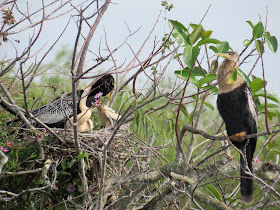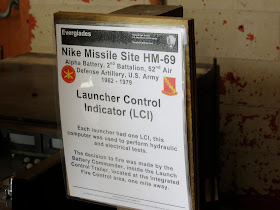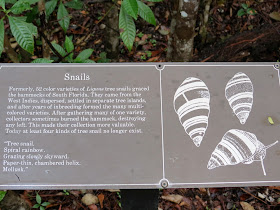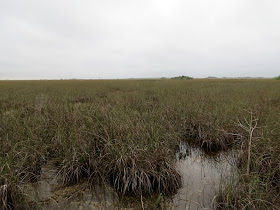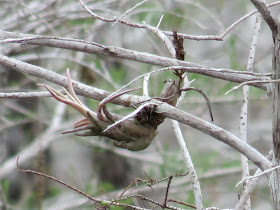Before leaving the Everglades, we visited Royal Palm one more time and found out they really do mean what the sign says.
Vultures will and do destroy your wiper blades and other rubber parts.And at least some of them have learned to remove protective tarps to get to the rubber.
I learned the Wood Stork is a sensory hunter. He dips his bill in the water and moves it around until he feels his prey.
It was fun to watch his technique from a close vantage point.
The Anhinga babies are growing fast. The female is on the right while the male is feeding the young.
Nearby is a former Nike Missile Base, active during the Cuban Missile Crisis. It has been taken over by the Park Service and is open for tours.
The Ranger holds the Army Battalion flag from the era.
A replica of the sign on the gate. The real sign is on display in the missile barn.
Missile Assembly building with original art work done by soldiers stationed here.Photo showing how the rockets were rolled out to the launch pad.
Ready to launch...at least one would be equipped with a nuclear warhead.
Entrance to a bunker where crew members would go during an alert.
Sometimes the alerts lasted many hours. A deck of cards was their only entertainment during a long wait.
Opening the doors to one of the missile barns. One barn usually held 4 missiles.
These missiles were built in Huntsville, Alabama. My friend Sarah would probably be interested in this tour, and could probably offer some declassified knowledge to add to what our guide knew.Their communications were still quite primitive!
Some Army Vets/bikers posing with the missile.
From there we moved on to Midway Campground in the Big Cypress National Preserve. $10 with electric with our Golden Age/Access passes.
At the Oasis Visitor Center, wildlife could be observed from a boardwalk along the canal. Note the gator swimming.
Suddenly there was a loud spash as the gator lunged for prey, presumably a fish.
Another fisher, the Anhinga, spears his prey with his pointed bill.
Then she repeatedly beat the fish on a rock. I wasn't sure if she was trying to kill it or get it off her beak so she could eat it.
There is a 24-mile Scenic Loop Drive through the Preserve, most of it on gravel road.
The road spans 3 counties: Collier, Monroe, and Miami-Dade, passing through mostly cypress swamp.
Bromiliads, orchids, and other air plants grow on the cypress trees.
Looking at sawgrass up close, you can see how it got its name.
Once again, we are in prime gator habitat.
Cypress Strand. These trees grow large due to the abundance of water here even in the dry season.This Tri-colored Heron appears to be missing a leg.
The large leafy plant is called Alligator Flag, and signals prime alligator habitat.
But we were looking for another unique critter along this trail.
The Tree Snail Hammock trail appears little used....perhaps because there was no parking lot. We parked on the grassy shoulder of the road.
It's a jungle in there.
But we had success finding the tree snails.They hide from predators by affixing themselves under branches or in crevasses.
These two parks, the Everglades and Big Cypress, with all their diversity of plants and animals are worthy of another visit.
There are many more trails to hike,and waterways to explore...we didn't get the kayaks out on the canoe trails.
Still much to learn about the plantlife...
And something new will be happening with each visit.
Lots more birds to see...these are 3 Black-necked Stilts, with a Yellowlegs.These Dwarf Cypress are the the same kind as the larger, just stunted due to low water and nutrients where they grow. They make nice perches for the Wood Storks.
So I have discovered another treasure in my own state that I had never visited. I'll be back.





